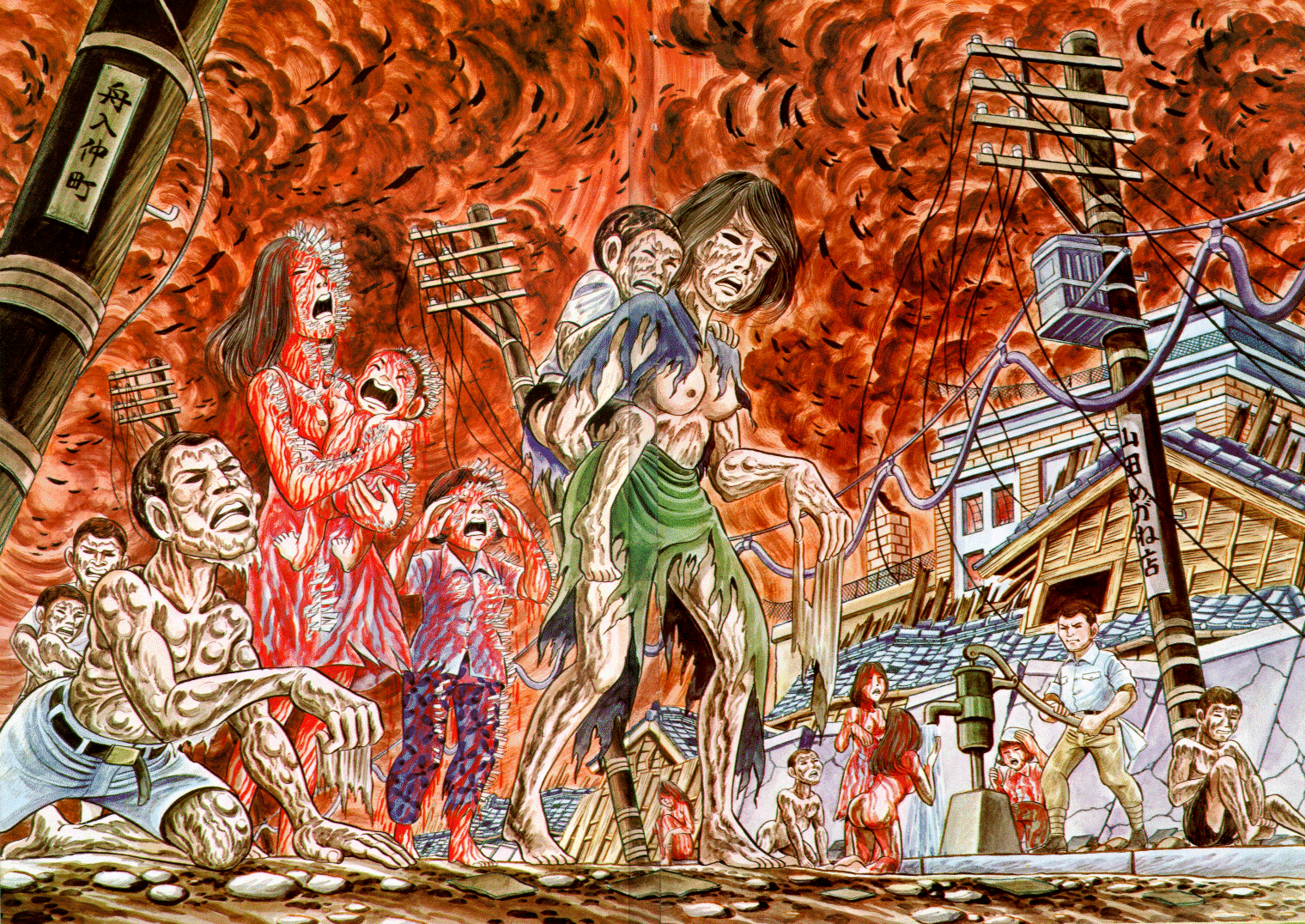 |
| From Barefoot Gen, graphic novel about Hiroshima by Keiji Nakazawa, author and illustrator (Hadashi no Gen). |
On August 6, 1945 the US dropped the first nuclear weapon on the city of Hiroshima. This event, plus the bombing of the city of Nagasaki a few days later with a different kind of atomic bomb, was always sold to the U.S. public as having been "necessary" to end WWII without a invasion of the Japanese mainland that was sure to cost the lives of many in the U.S. military. But the Japanese were already negotiating to surrender, and knew the war was lost for them.
Some have speculated the U.S. went ahead anyway in order to both test the weapons, and intimidate their WWII ally the U.S.S.R. in a spectacular kick-off to what would become the Cold War. The U.S. government to this day strives to intimidate Russia with weapons and propaganda.
U.S. citizens knew that some kind of catastrophic weapon had been deployed, and that the Japanese emperor soon surrendered, but it wasn't until John Hersey's long piece in the New Yorker in August, 1946 that many learned the gruesome details. Even then, the protracted suffering from radiation poisoning of the surviving hibakusha (a term that had to be coined) was largely unknown.
My own grandfather, drafted into WWII, was among the first U.S. troops to enter Nagasaki after the bomb. Despite pestering by his daughter (my mother), he would never talk about it.
Now we watch in horror as the Fukushima nuclear power plant continues to spew radiation into the atmosphere and groundwater, and attempts to clean it or contain it prove futile. Just last month, five years into the disaster, Dr. Shigeru Mita published an open letter stating his opinion that, due to radiation levels all over the city, Tokyo itself can no longer be safely inhabited.
We of the baby boom generation have lived under the threat of nuclear annihilation our entire lives. We've watched in horror as nuclear weapons and energy have proliferated, despite the best efforts of the Hiroshima-Nagasaki Protocol and many other efforts to have humans swear off nuclear before it is too late for everybody. The U.S. continues to use depleted uranium in its weapons, and anti-nuclear activist Cecile Pineda has argued convincingly that nuclear war is already underway.
When young people find out about the disaster in Hiroshima, they ask an essential question: Why did the U.S. drop an atomic bomb on the people of Hiroshima? I think this propaganda film made by the Army about Okinawa is a succinct explanation of the overall strategy, though it leaves out the build-up to Pearl Harbor engendered by blocking oil shipments to rapacious Imperial Japan.
My friends in Tokyo saw Japanese as the victims, not the aggressors, in WWII. Their analysis of history was that a cabal of businessmen and highly ranked government officials conspired to drag Japan into building an empire in the region, profiting mightily, while the people paid the price. Japanese starved their way through the war and then suffered conscripted labor and fire bombing of many of their cities even before nuclear disaster struck.
This informs the outpouring of resistance to suspending Article 9 of Japan's Constitution, paving the way for a return to aggressive militarism. No longer content to use Japan as a site of military installations, the U.S. "pivot to Asia" entails pressuring the Japanese government -- against the will of most of its people -- to return to building up armaments and armies of its own.
In our time Japanese have been leaders in the movement to ban all nuclear weapons -- and, increasingly, the ill-fated attempt to harness nuclear power as an energy source.
Today, my thoughts and prayers are with 日本
No comments:
Post a Comment